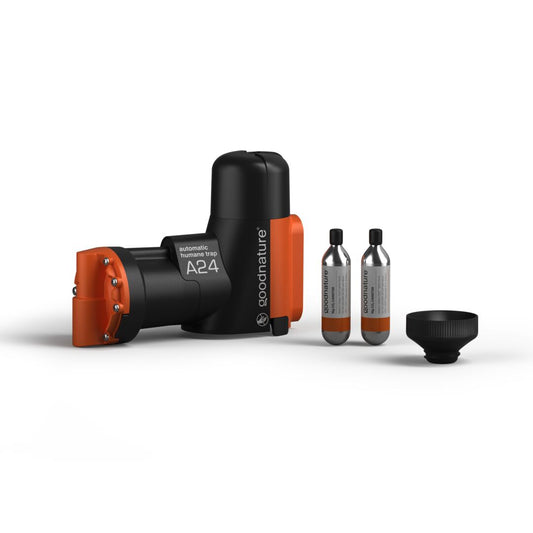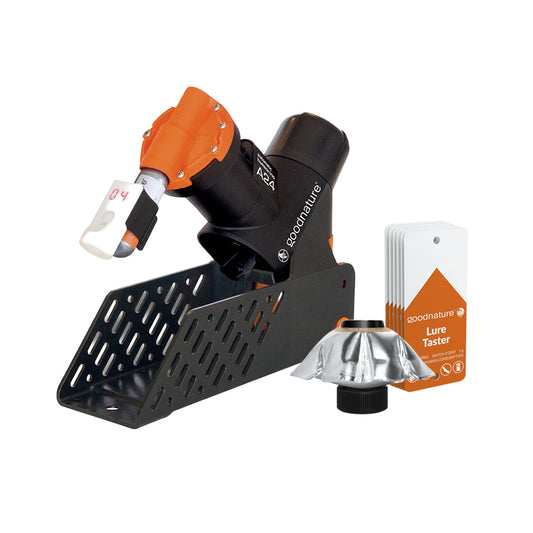
Every year across the U.S., rodents cause millions of dollars in damage to crops, farm equipment, and stored grain. For small farms, the battle against rats and mice can feel unending. Indeed, your time, money, and livelihood are at stake. One of the places rodents are most likely to appear is your barn.
Of course, keeping rats and mice out of your barn is extremely important for several reasons. Once they get in, they can damage the roof and walls, eat livestock feed and crop seeds, gnaw on the electrical wires of any equipment stored there, and pester horses, chickens, or cattle. To make matters worse, rodents are extremely effective disease carriers, and their presence can become dangerous for you, your family, and your animals.
Due to the financial and health risks alone, it’s vital for you to quickly and effectively remove any rodents from your barn and prevent them from returning. Unfortunately, it’s easy for farmers to spend far too much time dealing with rats and mice. This ends up costing you more money in the form of lost productivity—not to mention all the traps you’re buying.
Today, we’ll take a look at some newer, more effective techniques for rodent control in your barn—strategies that are bound to save you time and money in the long run.
Improving Rodent Control
If you’re like most farmers, you follow a well-worn path trying to eradicate rodents. When you see evidence of rats or mice, such as droppings or gnaw marks, you set out snap or glue traps in areas where they seem to be active. Then, you spend the next several weeks, or even months, checking the traps at least once a day, resetting and re-baiting them, and growing increasingly frustrated when they don’t work. To make matters worse, snap and glue traps aren’t known for being long-lasting, so you find yourself replacing them regularly. All the while, you’re wasting precious time that should be spent on other important tasks.
Considering this traditional approach to rodent control, it’s no wonder that mice and rats still cause millions of dollars worth of agricultural damage every year, despite the fact that snap and glue traps have been around for decades. Clearly, there’s a lot of room for improvement.
If you’ve become frustrated with rats or mice in your barn, consider the following tips to improve your rodent control methods:
Opt for Self-Resetting Traps
Checking and replacing traditional traps can become time-consuming and frustrating. This is especially true in agricultural settings, where large structures like barns can require dozens of snap or glue traps.
That’s why many farmers benefit from switching to automatic, self-resetting traps, such as the A24, which uses a CO2 canister to kill rodents instantly without your assistance. Each trap automatically resets itself after a kill, so it’s ready for the next rat or mouse. If the traps are installed inside your barn, you can check back periodically to dispose of any remains, or if you install traps outside around the perimeter of the barn, you can let scavengers do the work for you.
Think Big
Snap and glue traps can only kill so many rodents before they have to be replaced, which costs you more in the long run. A multi-kill rat trap, like the A24, can take care of up to 24 rodents with a single CO2 canister. Plus, re-baiting these traps is a non-issue. The lure bottle lasts six months, which means the trap can eradicate more rodents over time than any traditional trap could. Since you can reuse traps for years, you also save money and time overall.
Get Proactive
One of the worst parts about traditional snap and glue traps is that they are designed to be reactive to a rodent problem. That means you’re always on the defensive, trying to catch up with the infestation before it gets out of hand. Installing self-resetting traps allows you to be proactive, catching rodents as soon as they appear. You can install A24 traps around the perimeter of your barn, as well as inside, ensuring that any rats or mice that try to nest there will be quickly eradicated.
Learn More
As you can see, the traditional ways of handling rodent control simply don’t cut it in an agricultural setting. By combating mice and rats with snap and glue traps, you will spend too much time and money on an approach that rarely works. Before you encounter your next rodent problem, look into the A24 trap, which lets you be more effective and proactive without having to constantly reset and monitor your traps.





